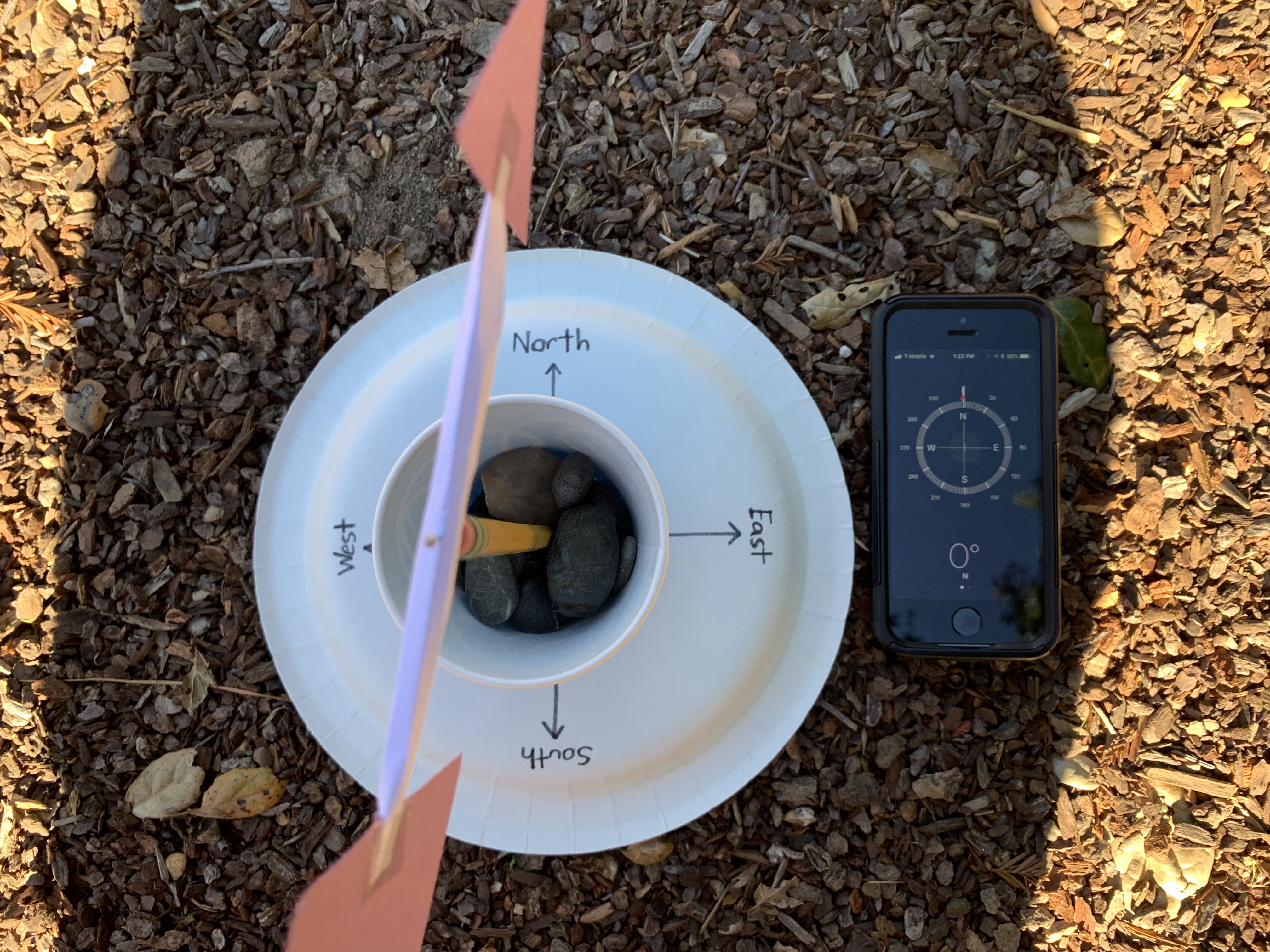
Make Your Own Weathervane
2020-08-05
Try this fun craft to determine which way the wind is blowing.
Questions to explore:
- How do people predict weather?
- What weather patterns can you observe?
What you'll need:
- Plastic cup
- Paper plate
- Unsharpened pencil
- Construction paper
- Plastic or paper straw
- Metal pin
- Markers and pencils for drawing
- Scissors
- Tape
- Ruler
- Hot glue gun and hot glue
What to do:
How to make your weathervane:
- Turn the plate upside down and divide it into quadrants (four equal parts) with a pencil. Going clockwise, write North, East, South, West at the end of each line. (The letters are fine too.) Use a ruler if necessary. Trace the lines with a marker.
- Hot glue the cup right-side up in the center of the paper plate.
- Glue the pencil, lead-side down, into the center of the cup.
- Cut a square and triangle out of the construction paper, both with a base of around 2½ inches.
- Cut small slits on either end of the straw. Slide the two paper shapes into the slits.
- Flatten the straw around the shapes and secure it with tape.
- Push the pin through the center of the straw and into the upright eraser of the pencil.
- Spin the straw to ensure it spins smoothly.
- Fill the empty cup with rocks, sand, or maybe water to weigh it down (so your vane doesn’t blow away in the wind!)
- Decorate it further if you wish then take it outside and try it out!
- Set up your weathervane in an open space (no trees or buildings to block the wind!)
- Align the plate base with a compass.
- The arrow will point towards the direction that the wind is coming from. Wait for the wind to blow and notice where it points!

How it works:
A weathervane (also known as a wind vane) is used to determine which way the wind is blowing from. When you align the compass markings on the base with a compass and set the vane down, the arrow on the top will point to where the wind is coming from. Weather vanes get the best readings without obstructions, which is why they are often seen on roofs.
In a typical vane, the back end (square in this case) has a significantly larger area than the front (the triangle) but a relatively similar mass. This means that when the wind blows on both the square and the arrow, more wind hits the larger square than the smaller triangle and the wind pushes on the square more.
▲
The wind exerts more pressure on the square than on the triangle
Therefore, the wind pushes the square away, leaving the triangle to point directly at the wind.